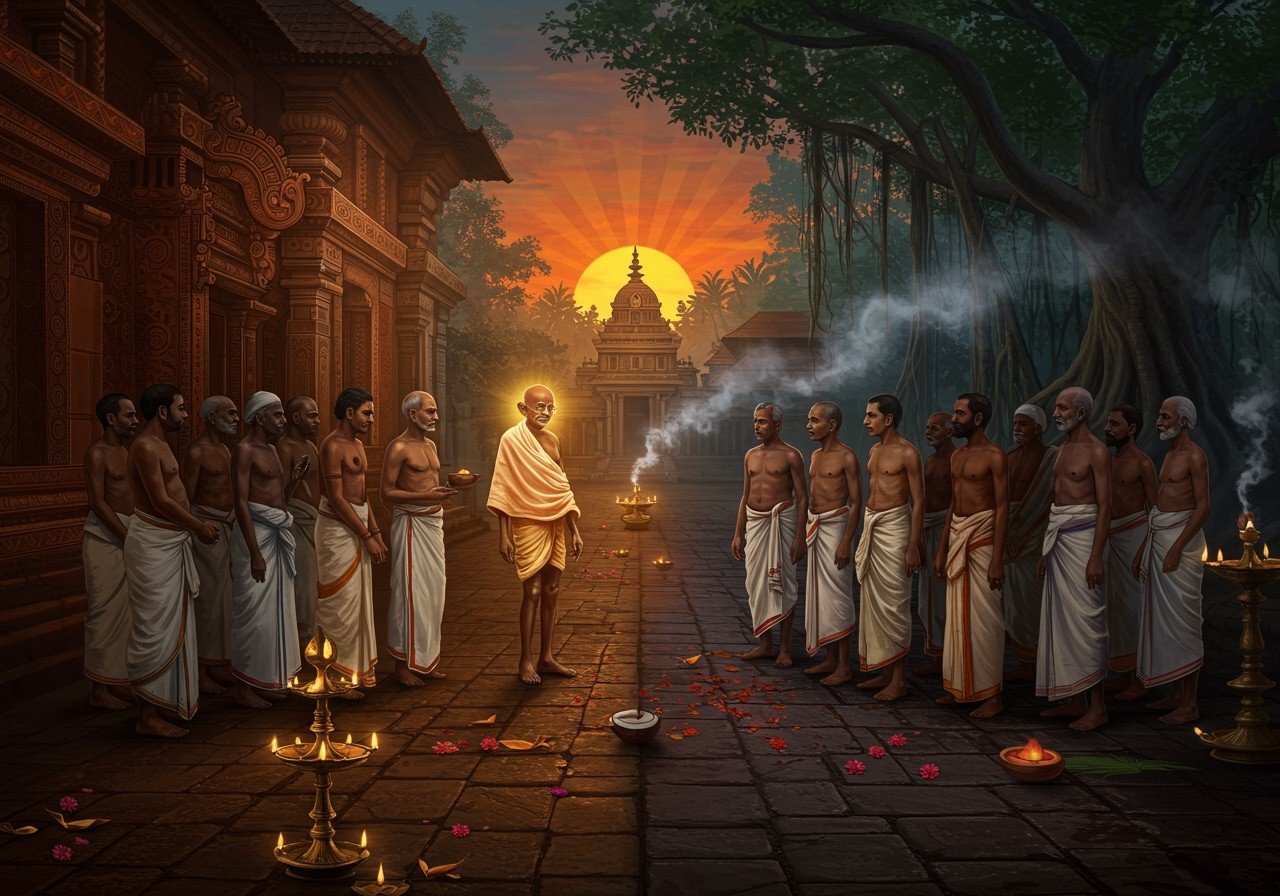
The Vaikom Satyagraha, a landmark movement in India’s struggle for social justice, unfolded between 1924 and 1925. Centered in Vaikom, Kerala, it challenged the entrenched caste system and aimed to secure temple entry rights for marginalized communities, particularly those considered “untouchable.” This satyagraha, deeply rooted in the philosophy of nonviolent resistance championed by Mahatma Gandhi, became a pivotal moment in the fight against caste discrimination and significantly influenced India’s broader social reform and independence movements. The centenary of the Vaikom Satyagraha, marked in 2024, serves as a poignant reminder of the movement’s lasting impact.
Historical Context and Preceding Events
Early 20th-century Kerala was marked by a rigid caste hierarchy. Lower castes faced systemic exclusion from public spaces, including temples, which were symbolic of social status and rights. Social reformers like Sree Narayana Guru had already begun advocating for caste equality, laying the groundwork for the Vaikom Satyagraha. Local protests and the rise of political organizations like the Kerala Congress further fueled the momentum for change. The initial resistance from the local government underscored the deep-seated nature of caste prejudice.
Key Figures and Leadership
While Mahatma Gandhi lent his support from afar, the Vaikom Satyagraha was spearheaded by dedicated local leaders. T.K. Madhavan, K. Kelappan, and George Joseph played crucial roles in organizing and sustaining the movement. Periyar E.V. Ramasamy’s involvement brought national attention to the struggle. The tireless efforts of grassroots organizers and volunteers, coupled with support from other Indian states and diverse communities, ensured the movement’s continued momentum. Learn more about Dharma and Karma in Hinduism to understand the context of this struggle.
Strategies and Tactics
The Vaikom Satyagraha was firmly grounded in the principles of nonviolent resistance, drawing inspiration from Gandhi’s concept of Satyagraha, meaning “truth force.” Peaceful blockades, sit-ins, and marches were the primary tactics employed. Women played a crucial role in the movement, demonstrating their commitment to social change. Effective use of media and public communication helped garner wider support and raise awareness. The movement’s ability to adapt to government crackdowns proved essential to its survival.
Government Response and Legal Battles
The Travancore princely state government initially responded with arrests and legal proceedings. The British colonial authorities also maintained a stance on the issue. The legal battles that ensued brought the arguments of both sides into sharp focus. Eventually, negotiations between the government and movement leaders resulted in concessions and agreements, marking a significant victory for the protesters. Explore the significance of Ratha Saptami and Surya Puja here.
Social and Political Impact
The Vaikom Satyagraha’s impact reverberated through Indian society. It challenged social taboos surrounding untouchability and paved the way for greater acceptance of marginalized communities in public spaces. This movement sparked similar temple entry movements across India, furthering the fight for social equality. It also significantly influenced the broader Indian independence movement and its leaders. Legislative changes, culminating in the Temple Entry Proclamation of 1936, were a direct result of the movement’s pressure. The Vaikom Satyagraha’s influence is also evident in modern Kerala’s progressive social policies. Discover the rich history of Hinduism here.
Legacy and Commemoration
The Vaikom Satyagraha’s legacy continues to inspire. It is commemorated through educational programs, cultural events, and memorials across India, particularly in Kerala. The movement serves as a powerful reminder of the long struggle for social equality and the transformative power of nonviolent resistance. Light a lamp with our pure cotton wicks available here to commemorate this historic struggle.
Conclusion
The Vaikom Satyagraha remains a powerful testament to the strength of nonviolent resistance in the fight for social justice. Its challenge to the deeply ingrained caste system and its contribution to significant social reforms in India continue to resonate. The courage and determination of its leaders and participants serve as an enduring inspiration. The movement not only secured temple entry rights but also laid the foundation for a more inclusive and equitable society. Its legacy encourages us to uphold the principles of equality and justice in our own time. You can find authentic puja items for your spiritual practices at Poojn.in.


